MISFITS (2014)
——
2014 / installation / various materials / 300 × 600 × 100 cm / installation view
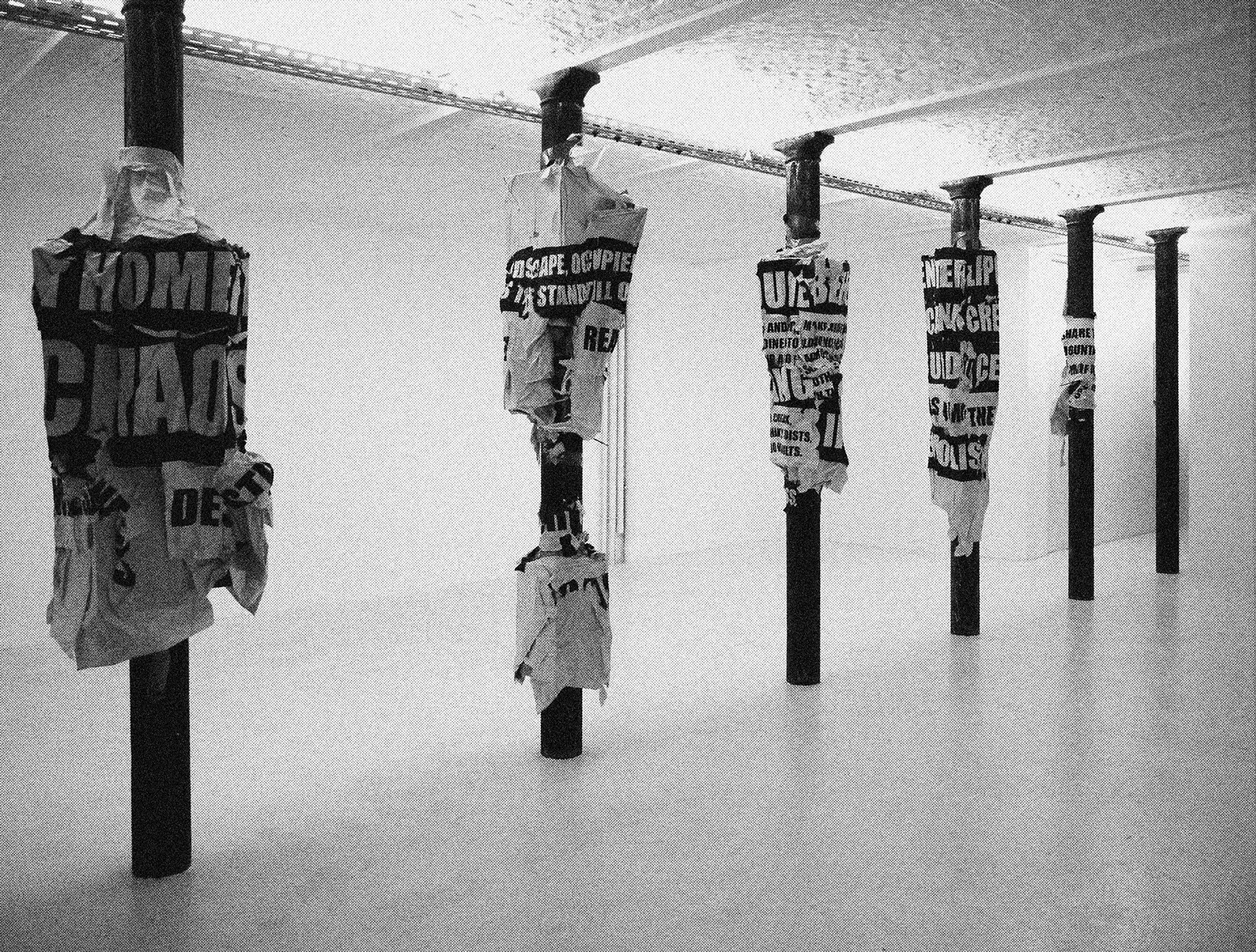
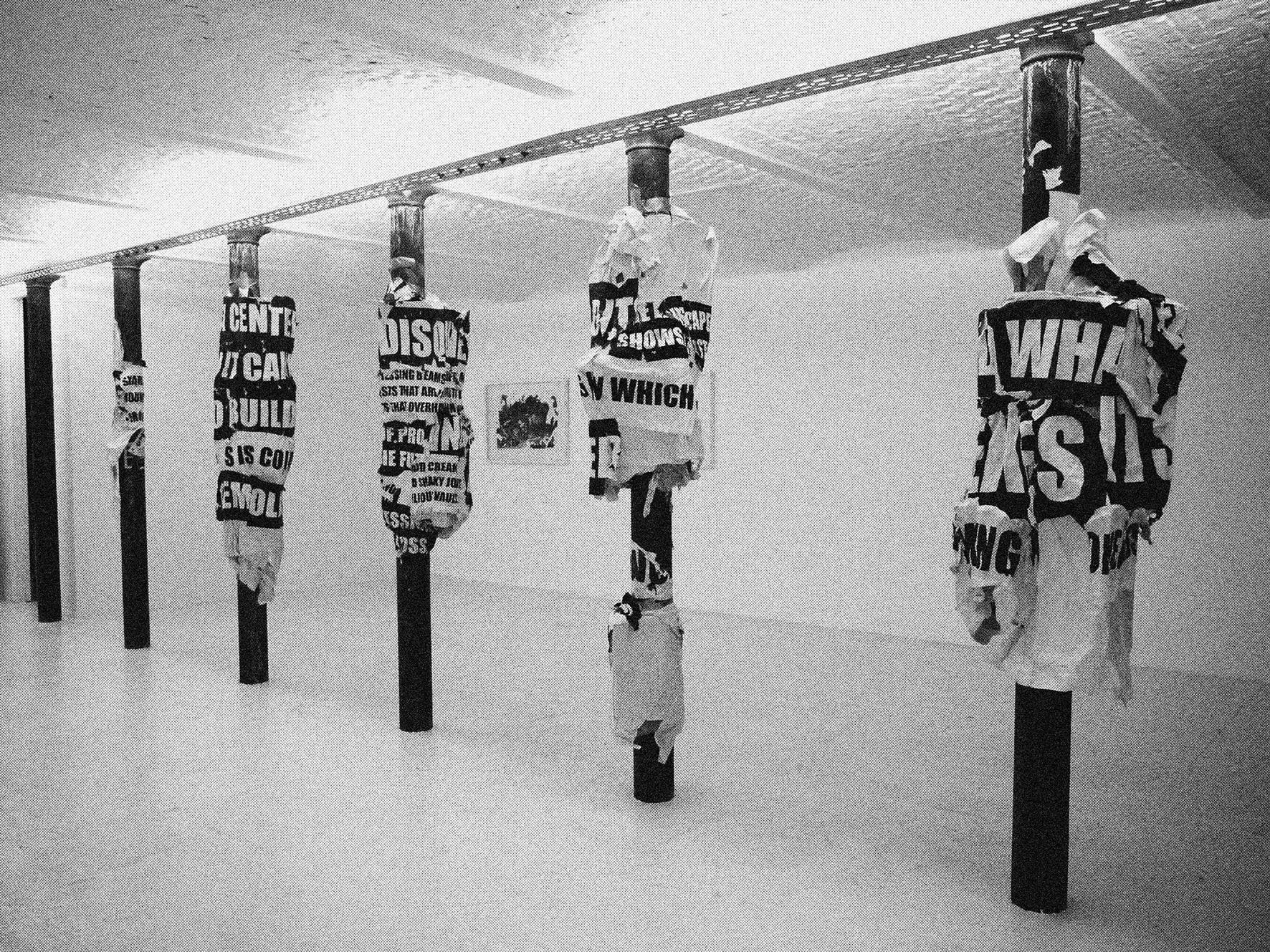
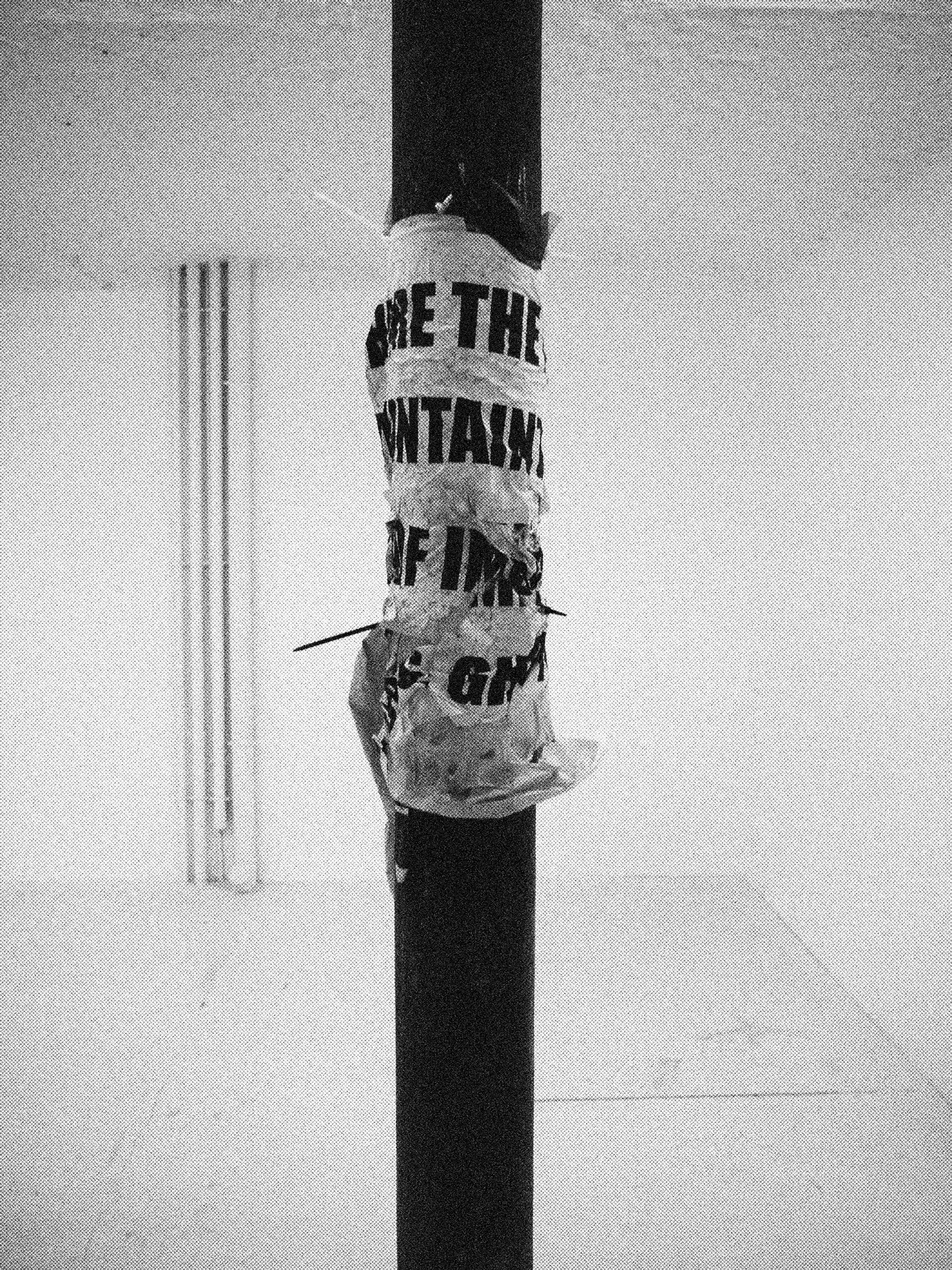
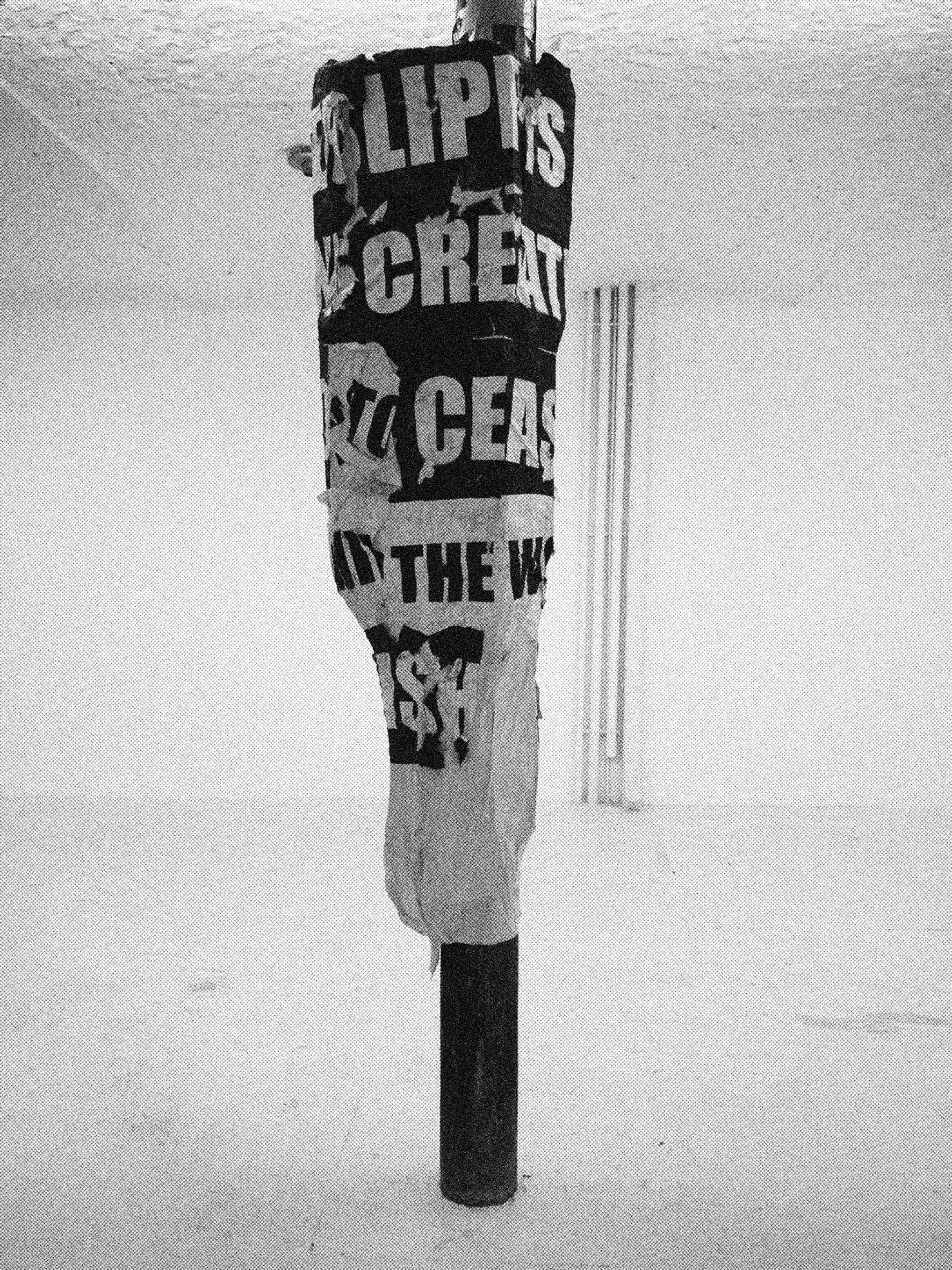
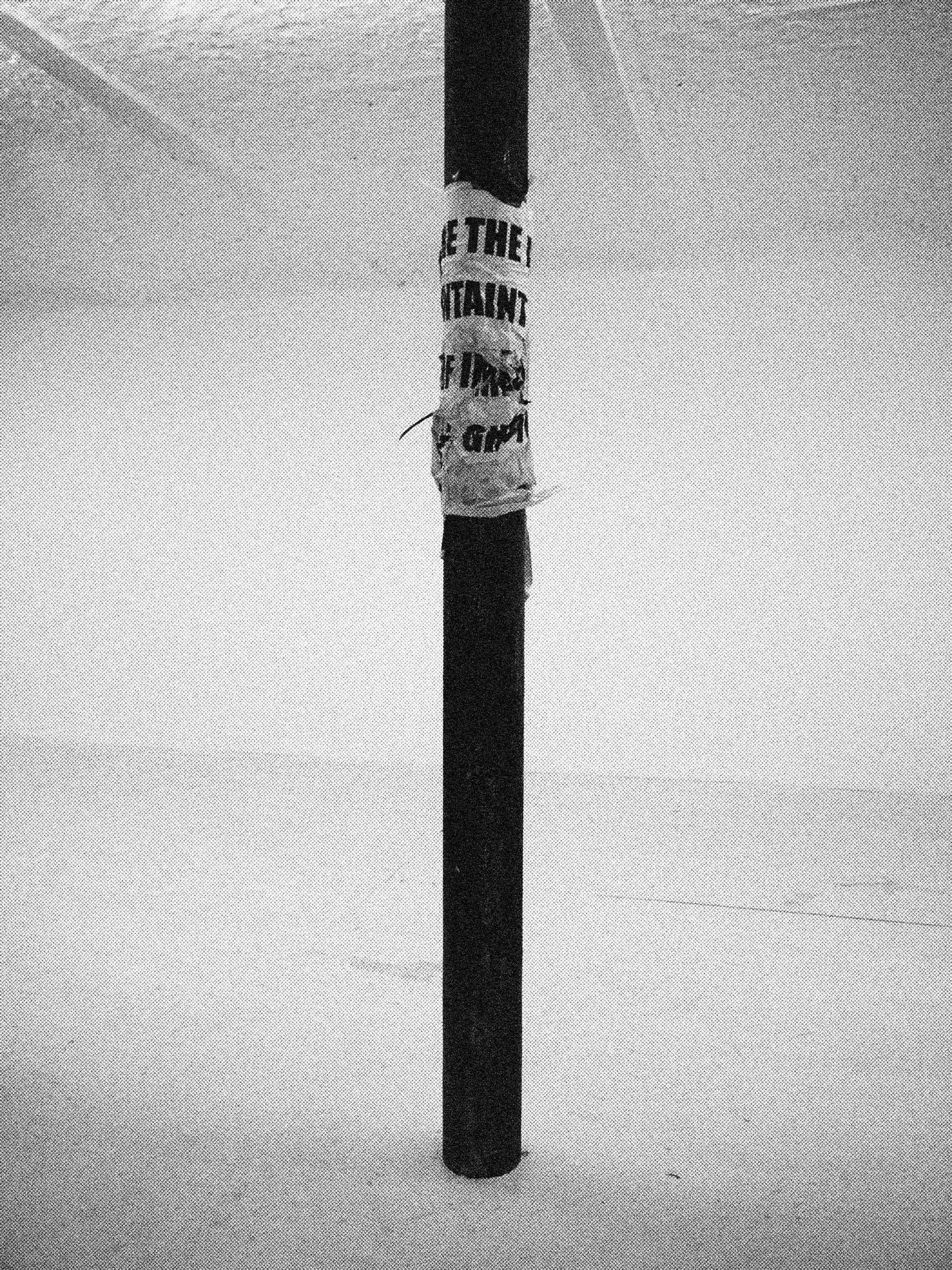


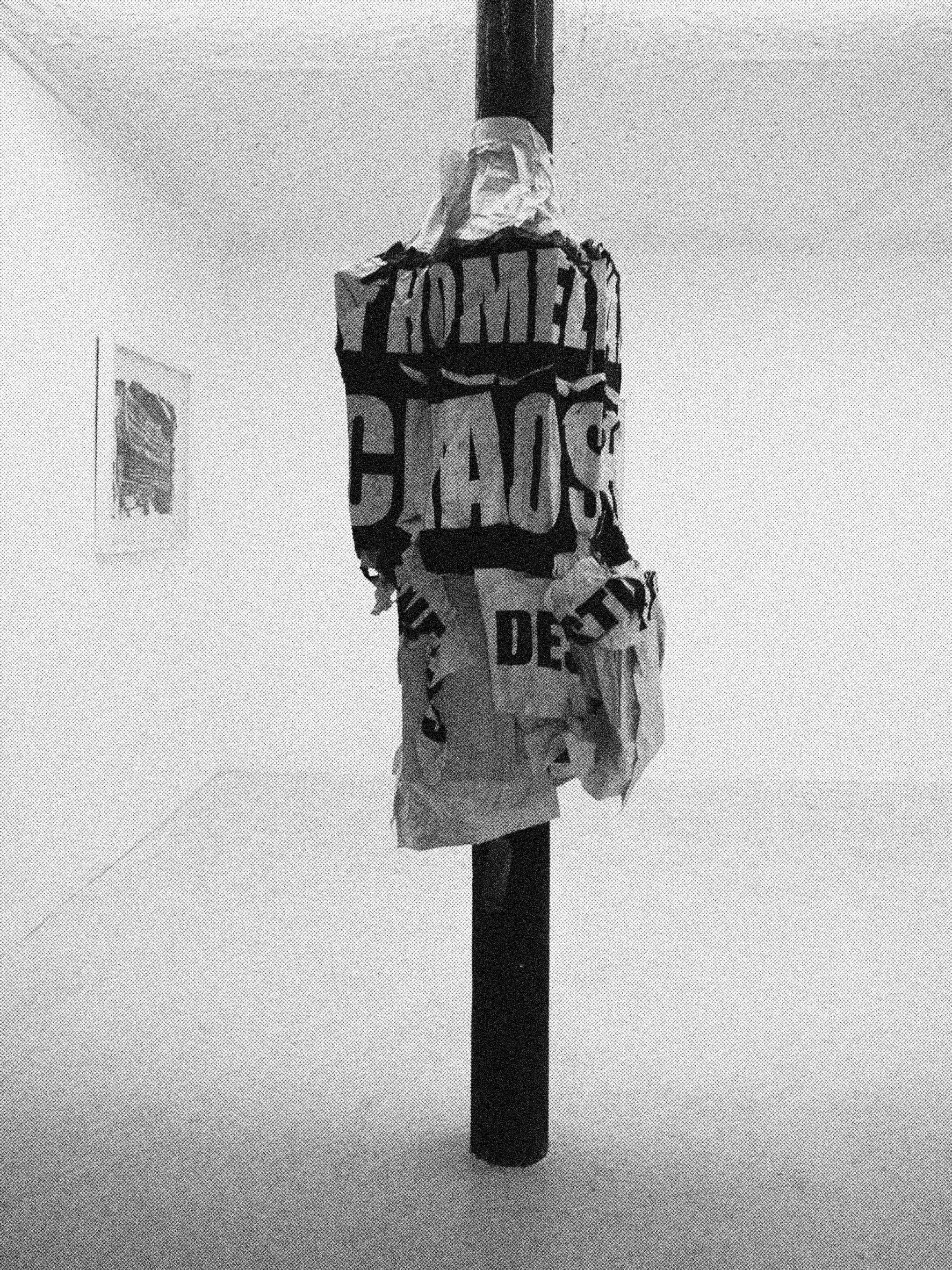
Interview by Colette Dubois
C.D. The exhibition at the Elaine Levy gallery is called ‘Misfits’. Is there a relationship with John Huston’s film with Marilyn Monroe or with the British television series?
P.V.W. No. The usage of ‘misfits’ refers to people operating outside and against the system in today’s crisis-driven world. It has to do with uncertainty about the future. Each of us can feel inadequate in a world that has the power to dictate what we should think, how we should behave and how we should work. These misfits sometimes want their voices to be heard. At protests you see words on banners, cries for attention or for help. But those at the top do not hear them. In supermarkets you have those advertisements where people offer themselves for small jobs like cleaning or massages. I see these, too, as cries for attention. I wanted to do something with these calls from people. The installation at the Elaine Levy gallery uses these announcements as something similar to the ‘lost cat’ posters you encounter on columns, panels and lampposts in the street. With my work, I would like to show people that the path laid out for them through these advertisements does not need to be followed.
P.V.W. No. The usage of ‘misfits’ refers to people operating outside and against the system in today’s crisis-driven world. It has to do with uncertainty about the future. Each of us can feel inadequate in a world that has the power to dictate what we should think, how we should behave and how we should work. These misfits sometimes want their voices to be heard. At protests you see words on banners, cries for attention or for help. But those at the top do not hear them. In supermarkets you have those advertisements where people offer themselves for small jobs like cleaning or massages. I see these, too, as cries for attention. I wanted to do something with these calls from people. The installation at the Elaine Levy gallery uses these announcements as something similar to the ‘lost cat’ posters you encounter on columns, panels and lampposts in the street. With my work, I would like to show people that the path laid out for them through these advertisements does not need to be followed.
C.D. You don’t usually work with collage...
P.V.W. Indeed, ‘misfits’ has another meaning here, as well. It refers to a type of work that I have never tried. Until now I have worked with installation, intervention and video art and have always avoided collage and painting. The exhibition will be composed of paintings and collages, which I have never shown before in my artistic practice.
P.V.W. Indeed, ‘misfits’ has another meaning here, as well. It refers to a type of work that I have never tried. Until now I have worked with installation, intervention and video art and have always avoided collage and painting. The exhibition will be composed of paintings and collages, which I have never shown before in my artistic practice.
C.D. What relationship do you establish between these collages and your practice of installation and intervention in the public space?
P.V.W. The technique I use here comes from my previous work. Before participating in exhibitions, the street was my medium. I stuck stickers and posters everywhere. During that time, I used a lot of screenprinting and photocopying, always in black and white, and I return to that in the gallery. The papers are crumpled, the poorly printed letters are the ruin of the paper, the ruin of the buildings, the ruin of all the materials that I choose.
P.V.W. The technique I use here comes from my previous work. Before participating in exhibitions, the street was my medium. I stuck stickers and posters everywhere. During that time, I used a lot of screenprinting and photocopying, always in black and white, and I return to that in the gallery. The papers are crumpled, the poorly printed letters are the ruin of the paper, the ruin of the buildings, the ruin of all the materials that I choose.
C.D. Can you tell me about what we will find in the exhibition?
P.V.W. The advertisement texts I use can be cries for help, but they can also be informative, warning of coming disasters: the end of the world, the economic crisis and perhaps also something like Fukushima. I make a connection with the film 12 Monkeys, an adaptation of Chris Marker’s film La Jetée. In the film, there are posters that say ‘this is what we did’, ‘we changed the world’ or ‘follow us in our movement’ put up by organizations that are trying to help people. These posters tell people what to do or invite people to join forces to oppose a system that is not good for humanity.
P.V.W. The advertisement texts I use can be cries for help, but they can also be informative, warning of coming disasters: the end of the world, the economic crisis and perhaps also something like Fukushima. I make a connection with the film 12 Monkeys, an adaptation of Chris Marker’s film La Jetée. In the film, there are posters that say ‘this is what we did’, ‘we changed the world’ or ‘follow us in our movement’ put up by organizations that are trying to help people. These posters tell people what to do or invite people to join forces to oppose a system that is not good for humanity.
C.D. Do you think the future will necessarily bring disaster?
P.V.W. At the start, I did not yet know that what I was doing had to do with disaster or with fear. I only had the idea of hiding and going somewhere. I went on the subway, I made cutouts, I was into graffiti. When I stopped doing graffiti, I still loved those walks: accessing the subway systems, going down the stairs, etc. I thought it was just about discovering spaces but then I realized that there was also something else. Being alone, far away from things. Showing people the future by using the past and revealing old buildings has the power to alert them to the future. The aspect is the same: the decay of a building can provide a glimpse of what will happen in the future.
P.V.W. At the start, I did not yet know that what I was doing had to do with disaster or with fear. I only had the idea of hiding and going somewhere. I went on the subway, I made cutouts, I was into graffiti. When I stopped doing graffiti, I still loved those walks: accessing the subway systems, going down the stairs, etc. I thought it was just about discovering spaces but then I realized that there was also something else. Being alone, far away from things. Showing people the future by using the past and revealing old buildings has the power to alert them to the future. The aspect is the same: the decay of a building can provide a glimpse of what will happen in the future.
C.D. How do you imagine the future?
P.V.W. Almost everyone is dead, the survivors are hiding underground. Everything is going from bad to worse. People are leaving certain areas because of whatever crisis is happening. It might not necessarily be the end of the world. It could be happening at an economic, ecological, political level or even because of a war. In any case, the buildings all have the same appearance. They fall into disrepair because they are abandoned or have been destroyed by war or an ecological or economic crisis. In Detroit or Charleroi, industrial buildings are abandoned. It is always from the buildings that you can see that something is wrong.
P.V.W. Almost everyone is dead, the survivors are hiding underground. Everything is going from bad to worse. People are leaving certain areas because of whatever crisis is happening. It might not necessarily be the end of the world. It could be happening at an economic, ecological, political level or even because of a war. In any case, the buildings all have the same appearance. They fall into disrepair because they are abandoned or have been destroyed by war or an ecological or economic crisis. In Detroit or Charleroi, industrial buildings are abandoned. It is always from the buildings that you can see that something is wrong.
(2014)